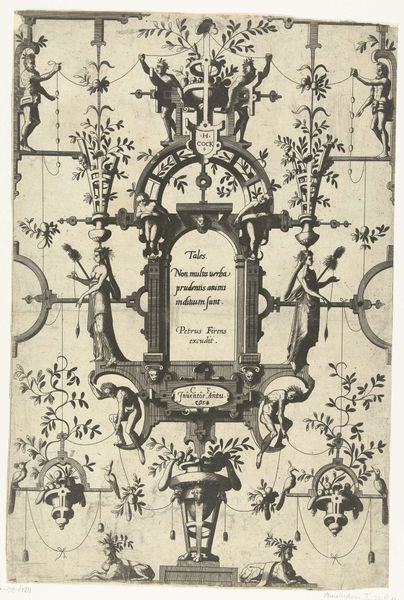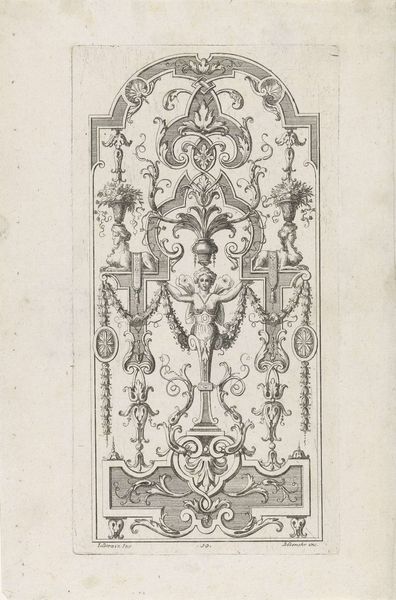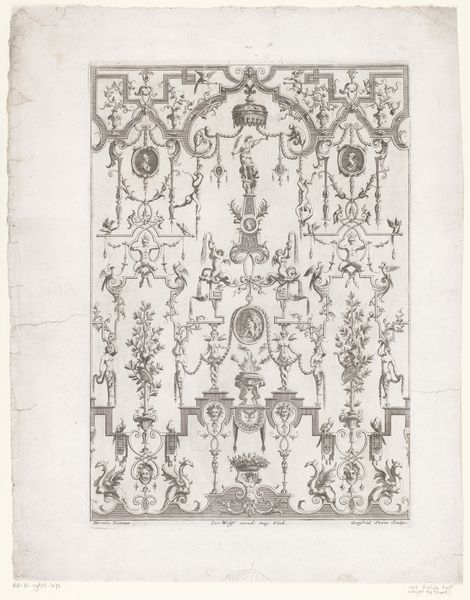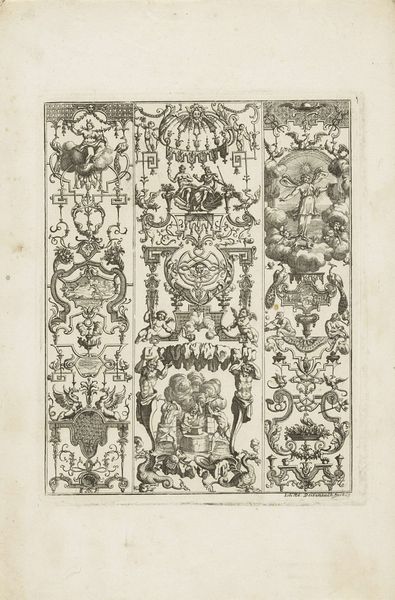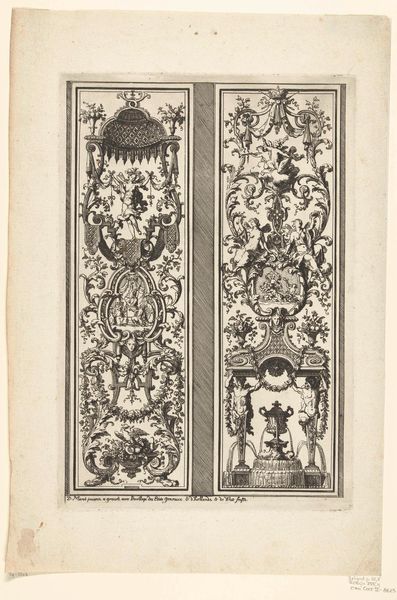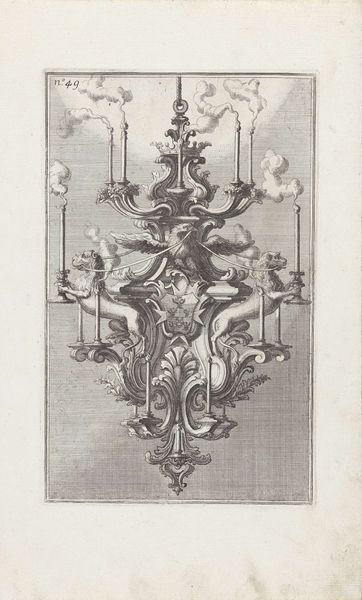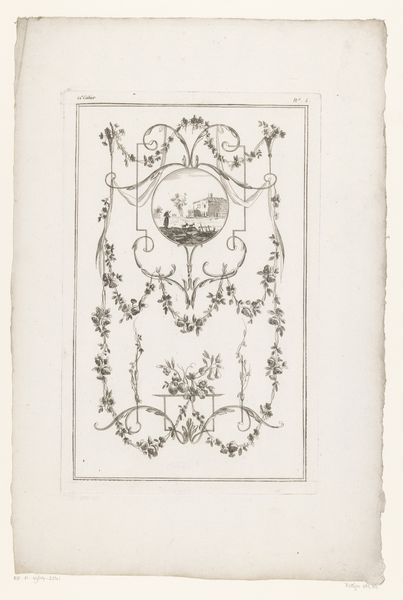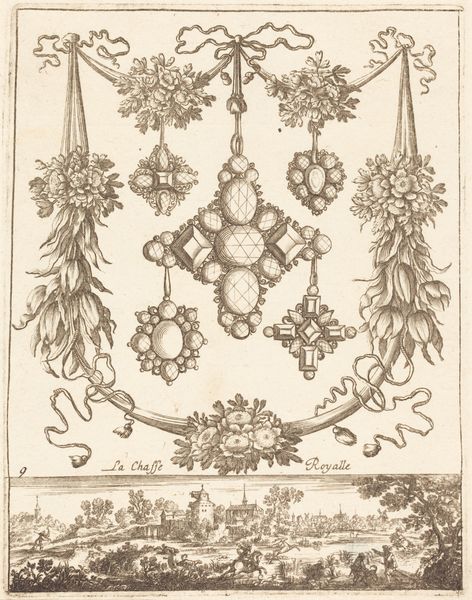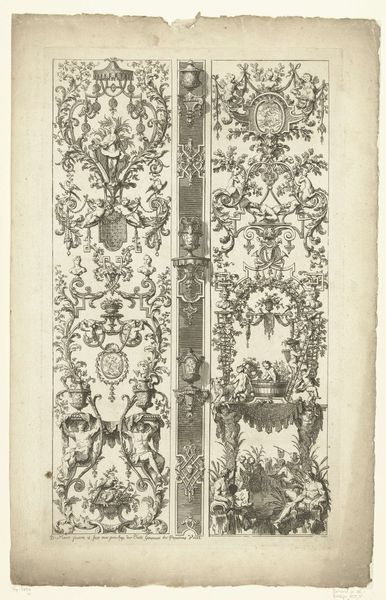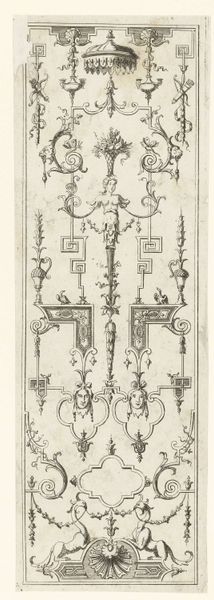
Cartouche met tekst van Bias tussen twee saters in rolwerk 1558 - 1630
0:00
0:00
johannesoflucasvandoetechum
Rijksmuseum
drawing, print, engraving
#
drawing
#
pen drawing
# print
#
mannerism
#
11_renaissance
#
geometric
#
pen work
#
engraving
Dimensions: height 305 mm, width 206 mm
Copyright: Rijks Museum: Open Domain
Curator: At first glance, this piece feels like a tightly wound mechanism, or a delicate cage. All fine lines and curious characters trapped within. Editor: I agree! And, visitors, we're currently looking at a print titled "Cartouche met tekst van Bias tussen twee saters in rolwerk" by Johannes or Lucas van Doetechum, dating from 1558 to 1630. It's an engraving held here at the Rijksmuseum. Tell me more about the mechanical feeling, though? Curator: The symmetry and repetition lend themselves to it. The satyrs feel like weights or counterbalances in some strange apparatus. Looking at it from an intersectional lens, I'm struck by how these classical, mythical figures are being put to work, almost industrialized. Are they being deployed to uphold a system, a set of values embedded in the inscription? Editor: An intriguing thought! I see this cartouche primarily as an example of masterful engraving, with particular focus on its function within the printmaking trade. The paper stock, the inks available during that time… Consider the socio-economic context that allowed for workshops and apprentices, and access to specialized tools. Curator: Absolutely. The production itself reflects its time. But it also mirrors deeper tensions. We see satyrs, often symbols of hedonism and freedom, framed by a rigid, ornamented structure. The text itself suggests a moral framework. I'm keen to understand what the intended viewers of this print would have brought to that reading. Editor: That tension between freedom and constraint you pointed out is central to mannerism. Notice the way space is flattened, pushing forms toward the viewer. It challenges classical balance. Think of how engravers worked, not merely replicating images, but interpreting them. Consider too, the physical demands. These are handmade objects of value because they are also labors of skill. Curator: How the artistic labor translates, what gets consumed, reproduced, re-interpreted… Fascinating. I'll keep that in mind as I consider its place within the evolving discourses on societal norms, both then and now. Editor: Likewise! Analyzing it this way—the artistic labor against societal messaging —lets you see these things from all angles. Thank you!
Comments
No comments
Be the first to comment and join the conversation on the ultimate creative platform.
